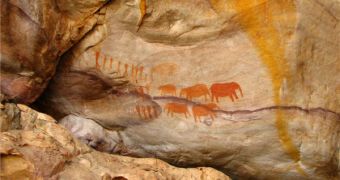Thus far, archaeologists and anthropologists had no idea about when the modern family started. And by modern, we mean united, mother father and children living together and caring for each other. A dig site, 4,600 year-old, may hold the answer to that. The location in Germany is the oldest discovered burial ground that features 13 bodies, most of which have their arms and fingers intertwined, suggesting they were related.
DNA sequencing showed that at least 4 of the bodies in the mass grave were related – a woman, her man (both in their mid-30s), and their two children, aged 4-5 and 8-9 years old, respectively. "By establishing the genetic links between the two adults and two children buried together in one grave, we have established the presence of the classic nuclear family in a prehistoric context in Central Europe – to our knowledge the oldest authentic molecular genetic evidence so far," said a statement released by Wolfgang Haak, with the University of Adelaide.
The important find, detailed in the Proceedings of the National Academy of Sciences, also sheds some light on the livelihood of prehistoric people. After analyzing the bones they found in the pit, Haak and his team concluded that they had been buried there following a confrontation, most likely an attack on their village. Some of the bones showed defense marks, as people tried to protect their children from stone-tipped arrows and heavy clubs.
One of the women had the stone tip of an arrow still lodged inside her bones, suggesting that the attack was swift. Anthropologists in the team say that the place was probably raided for loot, and that, after the attackers went away, the rest of the inhabitants returned and gave the victims a proper burial. "Their unity in death suggests a unity in life," says Haak.
A closer analysis of harvested DNA showed that most of the women were not part of the same gene pool as the men, which would mean that, even then, humans sought to avoid the practice of inbreeding. "Such traditions would have been important to avoid inbreeding and to forge kinship networks with other communities," concluded University of Bristol archaeologist, Alistair Pike, co-author of the study.

 14 DAY TRIAL //
14 DAY TRIAL //